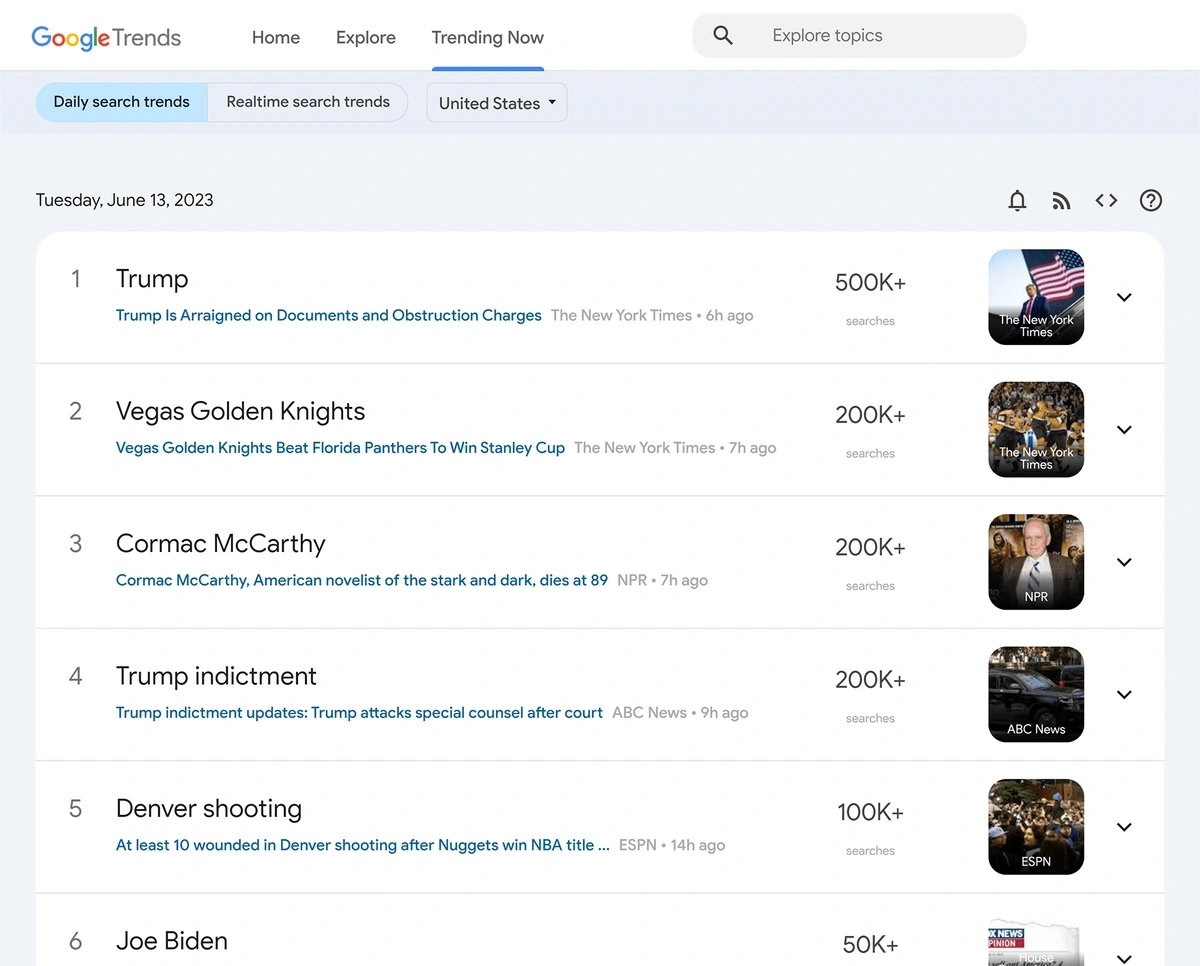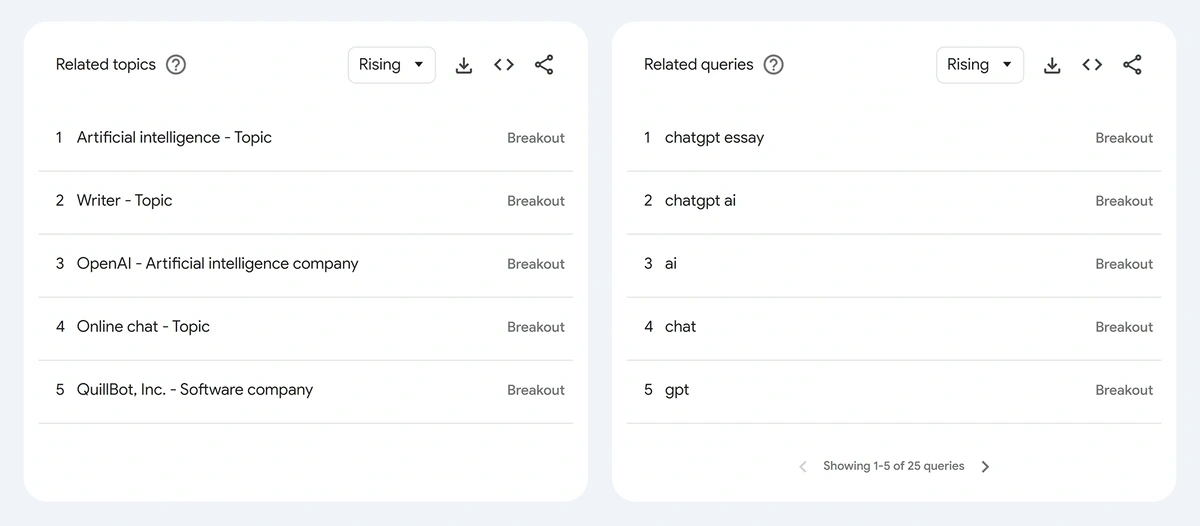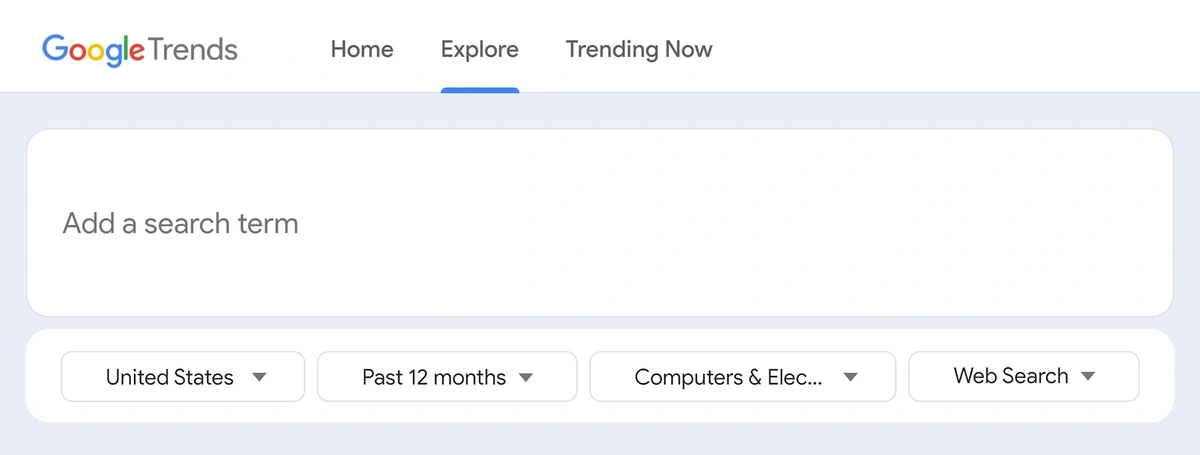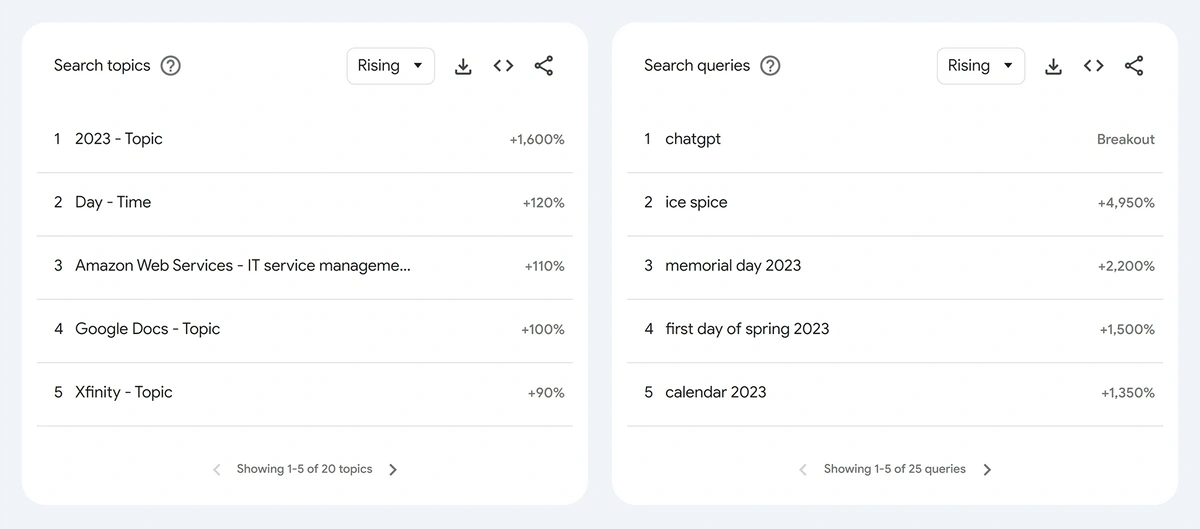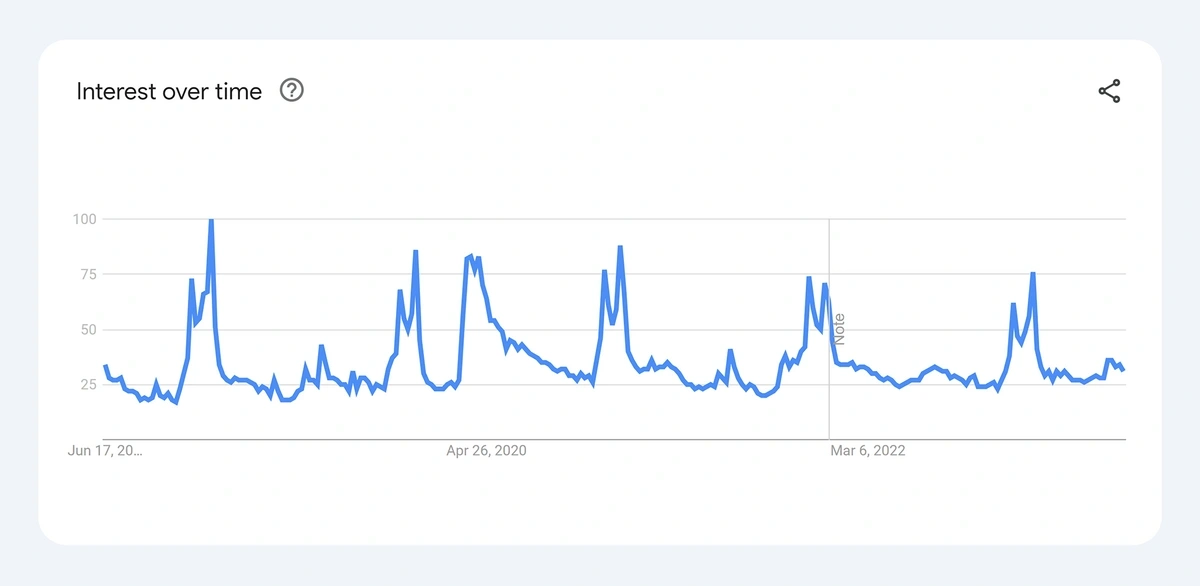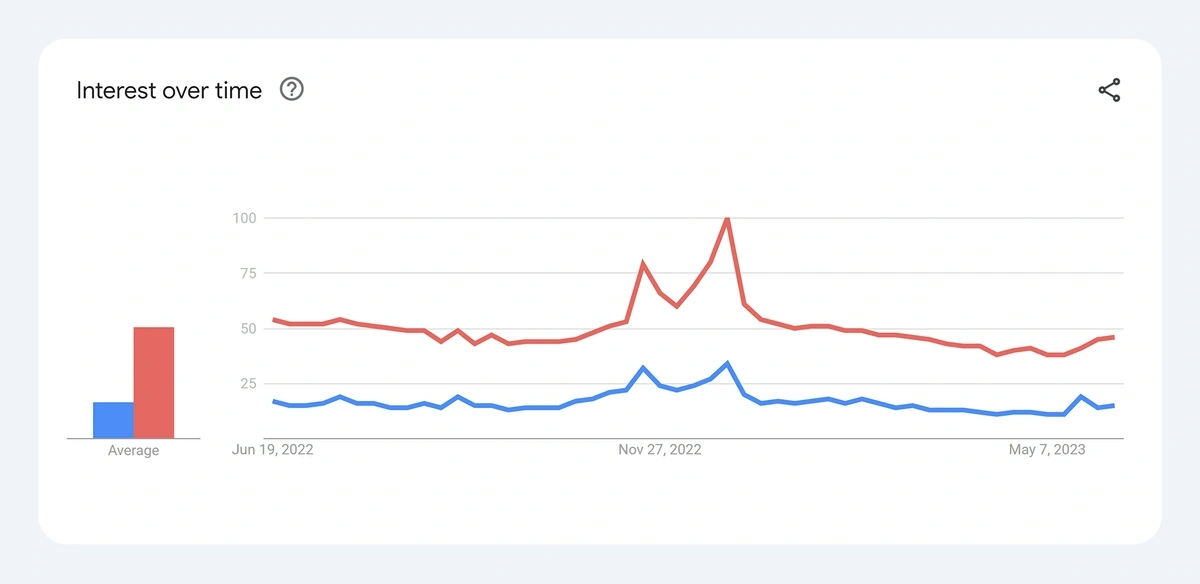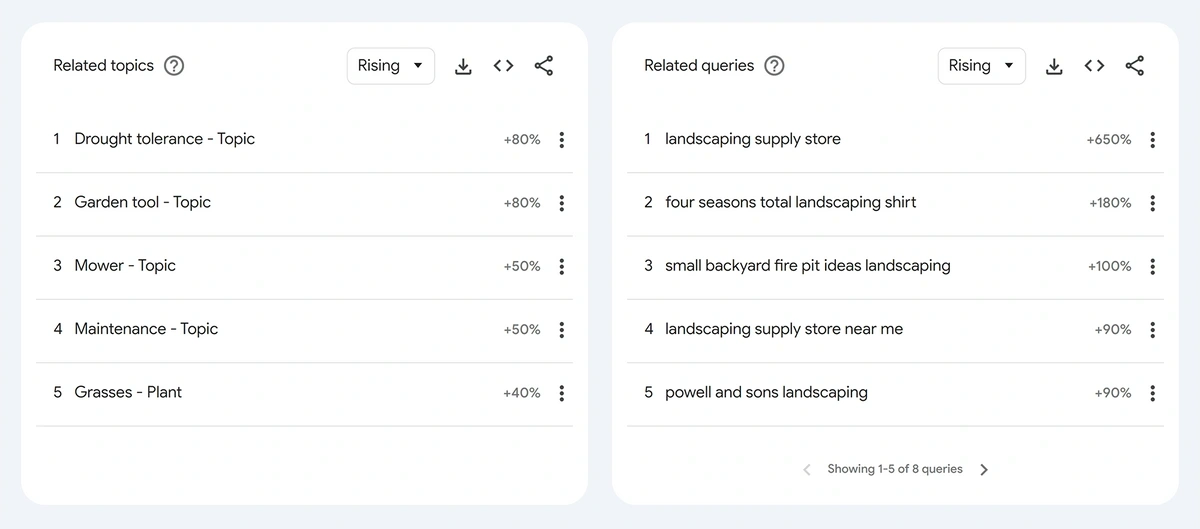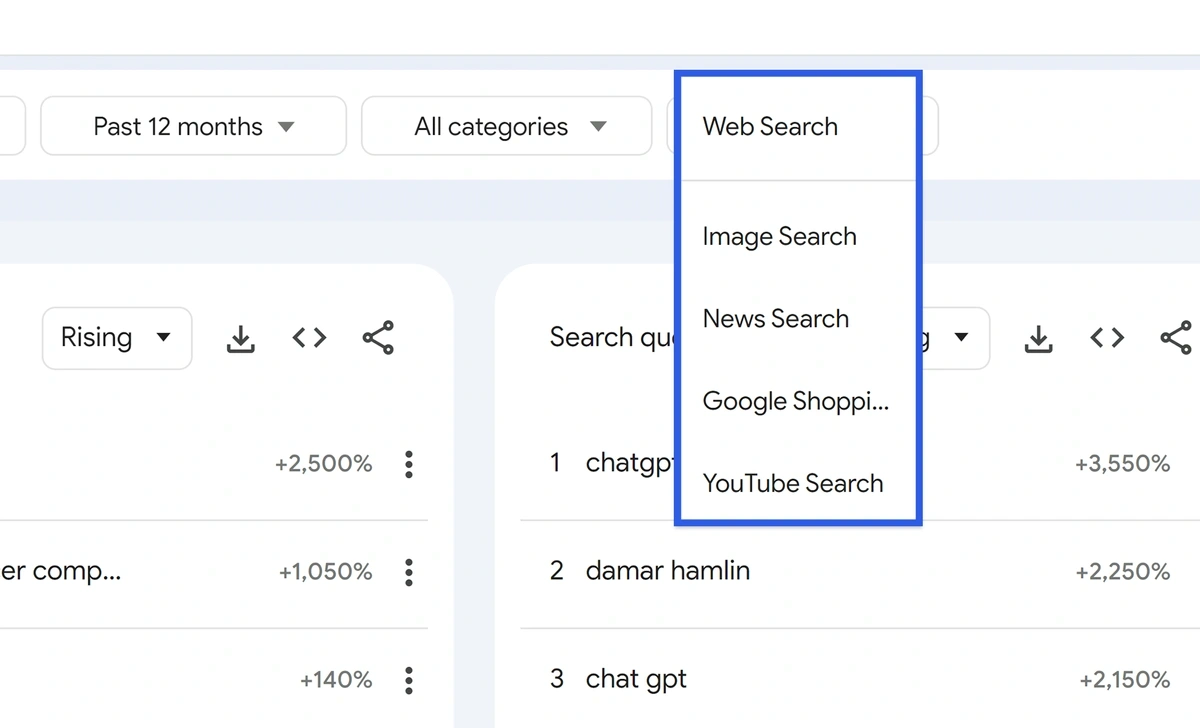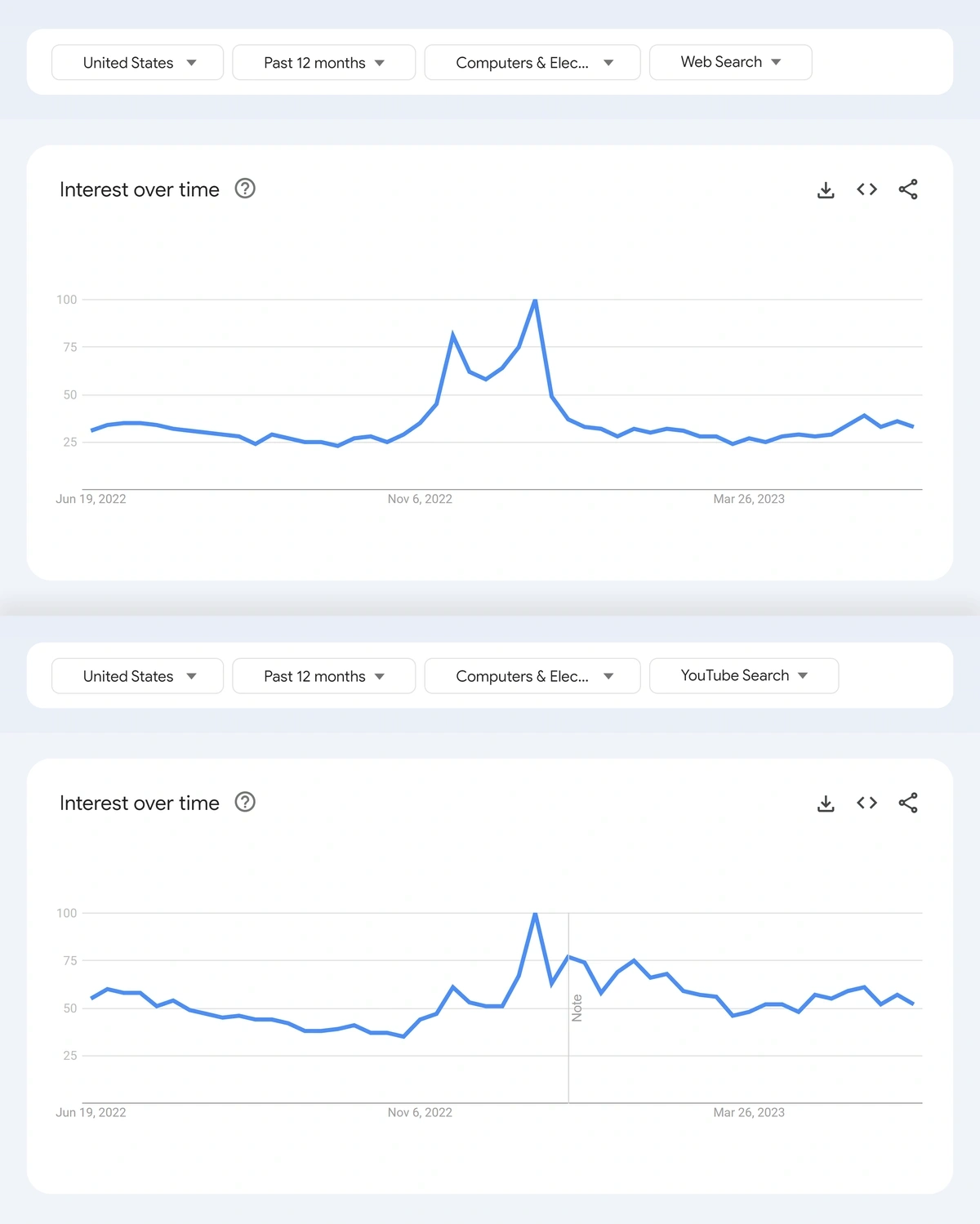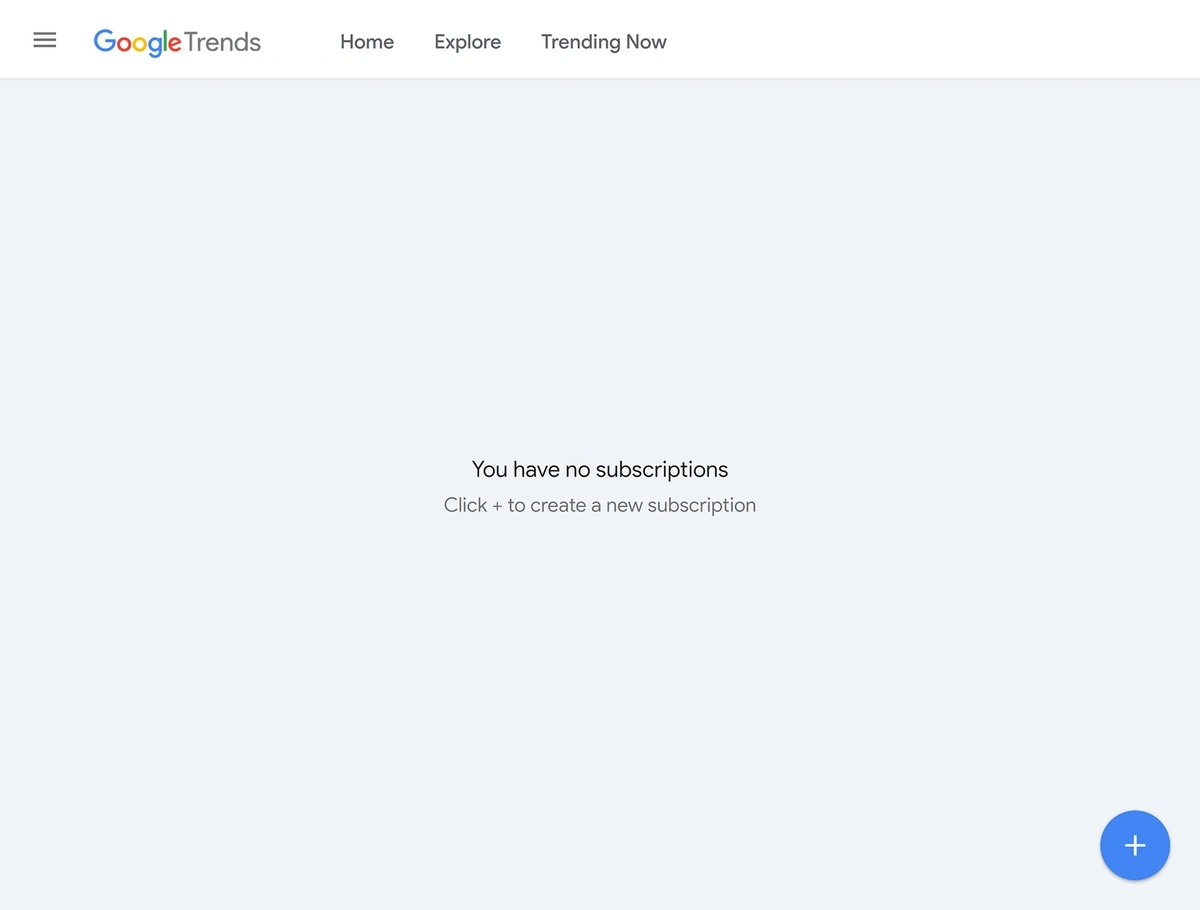
9 Ways to Use Google Trends for SEO & Content Marketing
Are you taking advantage of the power of Google Trends for your SEO and content marketing efforts?
If not, now’s the time!
In this article, we’ll discuss nine ways that you can incorporate Google Trends into your digital marketing strategy.
Let’s dive in.
1. Use Trending Now to find relevant trending topics
Browse through current trends and take advantage of any topics that relate to your brand or industry.
Go to the Trending Now tab on Google Trends to discover hot topics that are trending at the moment.
Peruse the daily search trends and realtime search trends to see if there is anything of consequence that you can use in your content marketing efforts.
These timely trends will be useful for finding quick topics for your social media content – particularly on TikTok, Twitter, Facebook, and Instagram.
You can also click on each topic to get the top trending news articles. Share relevant articles directly, or create similar content as it relates to your business to gain traction on your social media platforms.
2. Find new keyword opportunities
Google Trends can help you find new keyword opportunities that you may not have thought to go after. From searching current trends to deep diving into the related queries for your current topics, there are a lot of ways that you can do this.
The best way to get started is to take your search to the Explore page again.
This time, we’ll search the Books & Literature category over the past 12 months to see what topics have had high interest.
It’s interesting that “chatgpt” is a top-trending search query for this industry. It might be worth exploring further to see what kinds of questions people are asking about ChatGPT as it relates to books and literature and if there are some new topics we can address to drive new traffic to our platforms.
One way to dig deeper into this is to conduct another search in the Explore tab.
With our same settings – United States, Past 12 months, Books & Literature, Web Search – we’re going to type “chatgpt” as one of our search terms.
When we scroll down to Related queries under this new search, we can see actual search queries that relate to this topic within our industry.
Some new topics that we found include “chatgpt essay” and “chatgpt writing.”
To take our search one step further, we’ll go to a keyword research tool like AnswerThePublic to see what questions people ask about “chatgpt writing.” This will help us identify new content topics for blog articles and social media posts.
Now, we can browse through this list of questions for some great new ideas to fuel our content marketing efforts.
Conduct your searches like this and see what topics are cropping up that you haven’t placed much emphasis on yet.
3. Enhance your content planning
As you plan your content calendar, take your topics to Google Trends. Look at the seasonality of your topics to determine the best time to publish.
Let’s take corn mazes for example. Peak season for corn mazes is in October every year, but if we look at Google Trends, we can see that interest for corn mazes starts to grow in August, increases rapidly in September, and peaks at the beginning of October.
With that information, you should be putting out corn maze related content starting in August when interest is accumulating. You don’t want to wait until people have already decided which corn mazes they’re going to for the season.
You can also compare specific topics, like we did with our competitor research, to see which ones garner more interest.
Let’s say you have several attractions that you offer and you’re trying to decide which area to push the most focus to. In our search, we compared corn mazes, haunted houses, and pumpkin patches to find that people are most interested in pumpkin patches by a long shot.
4. Conduct market research
Google Trends contains some awesome features for conducting market research. You can search for popular industry topics as well as their seasonality.
The best way to search for popular industry topics is to go to the Explore section of Google Trends.
Then, select the region and timeframe you want to explore, as well as the category for your industry. For example, we’ll search the United States over the past 12 months in the Computer & Electronics industry.
From there, Google Trends will provide trending topics and search queries according to your search.
To discover the seasonality of your topics, enter a specific search term and expand the time range to several years.
Sticking with the Computer & Electronics industry, we’ll search the seasonal trends of “Nintendo Switch” over the past five years.
You can see that the search trends for Nintendo Switch increase around the holidays each year.
Use this kind of seasonal trend data to plan for high sales seasons. During those times, push out more advertising and content around popular services or products.
5. Perform competitor research
Competitor research is crucial for SEO efforts. It’s important to understand how your competitors are doing, and how you compare. This data can help you make informed decisions about your SEO strategy.
Take your competitor research to the Explore section of Google Trends. Enter your company or brand name and up to four competitors.
We’ll do a quick comparison between Playstation and Xbox over the last year.
We can see that Xbox generates a lot more interest on Google than Playstation does, but they follow similar trend lines.
Seeing a comparison like this can help you determine if you need to generate more interest for your brand. If the interest in your brand is significantly less than your close competitors, that could be an indicator that you need to generate more brand awareness.
If you scroll down further in Google Trends when you perform this competitor comparison, you’ll also see top search for your brand under Related Queries. These topics can help you plan your content around things that people are already interested in so you can continue to grow the interest in your brand.
6. Use Google Trends for topic clustering
Your SEO strategy should have a big emphasis on creating new content. But it can be difficult to continuously come up with new and interesting topics off the top of your head.
Use Google Trends to help you identify new topics for clustering that you can link back to your pillar content.
To do this, start by entering the pillar topic that you’re trying to grow into Google Trends.
We’ll use landscaping in this example.
After you type in your topic, scroll down to the Related topics and Related queries section to see other similar topics that people are interested in.
If you sort Related queries by Rising, you can identify new topics that are currently rising in popularity.
While a few of these phrases are companies, we can see that the third most popular rising query is “small backyard fire pit ideas landscaping.” That could be a great topic to write a blog article about and link back to a pillar page for landscaping.
Use this tactic to create your content map for each pillar page on your website. Identify several new topics for each pillar topic, check out their seasonality, and use that to drive your content calendar.
7. Utilize search types to determine what kind of content to create
Google Trends has the capability to give us further insights into the intent of a user’s search. We can use its search types filter to help us with this.
There are a couple different ways you can use this.
First, you can identify the type of search that you want to generate more content for – web, image, news, Google Shopping, or YouTube – and then find new topics from there.
For example, let’s change the search type to Google Shopping and update the category to our industry – we’ll use Computers & Electronics. Now, we can see some of the top searches people made over the past 12 months for specific products in the Google Shopping search.
This can help you identify product pages that you can enhance the content for or push additional content and link building efforts towards.
The second way we can utilize search types is by typing in one of the main content topics we’re trying to grow and checking it out with each search type.
If we look at the interest for “nintendo switch” on web search vs YouTube search, we can see that it has a more steady trend on Youtube than web searches. That could tell us that we should be putting out more video content for this topic.
8. Use Google Trends for newsjacking
Newsjacking is a concept where you take advantage of a well-known news event’s popularity by blasting your offerings in ads surrounding the event.
For example, if you are a fashion brand, you might take advantage of Fashion Week and the Met Gala. These high-profile events have a major emphasis on fashion. Newsjacking these events would be to run ads during the event to promote your offerings. Depending on the size of your brand, you might consider running ads on the major networks and streaming services covering those events.
You can use Google Trends to track news and events relevant to your brand.
To sign up for a Google Trends subscription and track specific types of events, follow these steps:
- Go to https://trends.google.com/trends/subscriptions
- Click on the blue plus icon in the bottom right corner
- Enter the topic you’re interested in, the region (your country or “Worldwide”), and how often you want to receive alerts. You can also select “Trending Searches” and subscribe to daily search trends.
- Click Subscribe, and create as many subscriptions as you’d like.
9. Investigate changes in site traffic
Google Trends can help you troubleshoot why your traffic might be dropping or increasing suddenly.
Do you have a specific topic where traffic has just dropped off? Or maybe one of your blog topics has blown up recently.
Look up that topic on Google Trends over the period of time that your traffic changes have occurred to see if there is any correlation in user interest and your traffic changes.
Let’s say we’re a tech company and have received a ton of traffic to our ChatGPT-related articles over the past few months.
If we conduct a search for this topic in Google Trends, we can see that this topic has received a lot of interest in Google searches. That is likely contributing to our increase in traffic.
Another good example of this could be a diet or fitness trend. If you have a health and wellness website that covers several different diet plans, and all of a sudden a blog for a specific diet takes off, check Google Trends to see if it is suddenly growing in popularity.
That can also be a good indicator that you should produce some more content around that topic.
On the other side of this, if you find that your traffic is dropping off for a certain topic, and user interest is trending the same way, then you may need to find other areas to focus your content marketing efforts.
Conclusion
Don’t limit your SEO and content marketing efforts to the same things you’ve always done. Look for new opportunities like those that Google Trends can offer.
I hope you’ve found these ideas helpful and that your content marketing efforts soar as you get going.
Stop Guessing, Start Growing 🚀
Use real-time topic data to create content that resonates and brings results.
Exploding Topics is owned by Semrush. Our mission is to provide accurate data and expert insights on emerging trends. Unless otherwise noted, this page’s content was written by either an employee or a paid contractor of Semrush Inc.
Share
Newsletter Signup
By clicking “Subscribe” you agree to Semrush Privacy Policy and consent to Semrush using your contact data for newsletter purposes
Written By


Josh is the Co-Founder and CTO of Exploding Topics. Josh has led Exploding Topics product development from the first line of co... Read more

